OLPC research
This page provides links to research reports related to the OLPC project. See also Experience, Constructionism, Reviews of OLPC, and Class Acts (a FLOSS Manuals community publication) for articles and other anecdotal evidence.
Contents
- 1 Literature Review
- 2 Papers
- 2.1 Educational Outcomes and Research from 1:1 Computing Settings
- 2.2 One to One Computing: A Summary of the Quantitative Results from the Berkshire Wireless Learning Initiative
- 2.3 After Installation: Ubiquitous Computing and High School Science in Three Experienced, High-Technology Schools
- 2.4 Evaluating the Implementation Fidelity of Technology Immersion and its Relationship with Student Achievement
- 2.5 Laptops and Fourth Grade Literacy: Assisting the Jump over the Fourth-Grade Slump
- 2.6 The End of Techno-Critique: The Naked Truth about 1:1 Laptop Initiatives and Educational Change
- 2.7 First Experiences with OLPC in European Classrooms
- 2.8 Ethiopia Implementation Report, September - December 2007
- 2.9 Nepal
- 2.10 Evaluation of the Teaching Matters One Laptop Per Child (XO) Pilot at Kappa I V
- 2.11 1:1 Technologies/Computing (Ethiopia)
- 2.12 The shape of disruption
- 3 Conference materials
- 4 Scholarly articles
- 5 Ongoing Research (not yet published)
- 6 Other Resources
Literature Review

- Evaluation of OLPC programs globally: a literature review, V2, by Dita Nugroho and Michele Lonsdale. Australian Council for Educational Research, March 2009. PDF Country program summaries, with XO deployment data, funding, and impacts.
Papers
Educational Outcomes and Research from 1:1 Computing Settings
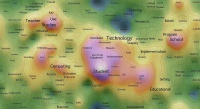
The Journal of Technology, Learning and Assessment (JTLA)
Educational Outcomes and Research from 1:1 Computing Settings
- Damian Bebell and Laura O'Dwyer
- Despite the growing interest in 1:1 computing initiatives, relatively little empirical research has focused on the outcomes of these investments. The current special edition of the Journal of Technology and Assessment presents four empirical studies of K–12 1:1 computing programs and one review of key themes in the conversation about 1:1 computing among advocates and critics. In this introduction to our 1:1 special edition, we synthesize across the studies and discuss the emergent themes. Looking specifically across these studies, we summarize evidence that participation in the 1:1 programs was associated with increased student and teacher technology use, increased student engagement and interest level, and modest increases in student achievement.
One to One Computing: A Summary of the Quantitative Results from the Berkshire Wireless Learning Initiative
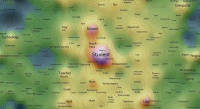
The Journal of Technology, Learning and Assessment (JTLA)
- Damian Bebell and Rachel Kay
- This paper examines the educational impacts of the Berkshire Wireless Learning Initiative (BWLI), a pilot program that provided 1:1 technology access to all students and teachers across five public and private middle schools in western Massachusetts. Using a pre/post comparative study design, the current study explores a wide range of program impacts over the three years of the project’s implementation. Specifically, the current document provides an overview of the project background, implementation, research design and methodology, and a summary of the quantitative results. The study details how teaching and learning practices changed when students and teachers were provided with laptops, wireless learning environments, and additional technology resources. The results found that both the implementation and outcomes of the program were varied across the five 1:1 settings and over the three years of the student laptop implementation. Despite these differences, there was evidence that the types of educational access and opportunities afforded by 1:1 computing through the pilot program led to measurable changes in teacher practices, student achievement, student engagement, and students’ research skills.
After Installation: Ubiquitous Computing and High School Science in Three Experienced, High-Technology Schools
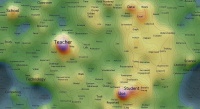
The Journal of Technology, Learning and Assessment (JTLA)
- Brian Drayton, Joni K. Falk, Rena Stroud, Kathryn Hobbs, and James Hammerman
- There are few studies of the impact of ubiquitous computing on high school science, and the majority of studies of ubiquitous computing report on the first period of implementation. The present study presents data on 3 high schools with carefully elaborated ubiquitous computing systems, who have gone through at least one "obsolescence cycle" and are therefore several years past first implementation. Data shows how the affordances of 1:1, wireless environment are being deployed in these science classrooms, and the effects of the environment on science content, data analysis, labs and other uses for visualizations, and classroom interaction. While some positive effects are clearly seen in these classrooms, even 5 years or more into the innovation, problems remain, and school cultural factors seem to play an important role in teacher uptake and integration of the technology. Implications for teacher learning are discussed.
Evaluating the Implementation Fidelity of Technology Immersion and its Relationship with Student Achievement
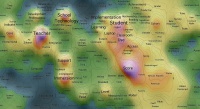
The Journal of Technology, Learning and Assessment (JTLA)
- Kelly S. Shapley, Daniel Sheehan, Catherine Maloney, and Fanny Caranikas-Walker
- In a pilot study of the Technology Immersion model, high-need middle schools were “immersed” in technology by providing a laptop for each student and teacher, wireless Internet access, curricular and assessment resources, professional development, and technical and pedagogical support. This article examines the fidelity of model implementation and associations between implementation indicators and student achievement. Results across three years for 21 immersion schools show that the average levels of school support for Technology Immersion and teachers’ Classroom Immersion increased slightly, while the level of Student Access and Use declined. Implementation quality varied across schools and classrooms, with a quarter or less of schools and core-content classrooms reaching substantial implementation. Using hierarchical linear modeling, we found that teacher-level implementation components (Immersion Support, Classroom Immersion) were inconsistent and mostly not statistically significant predictors of student achievement, whereas students’ use of laptops outside of school for homework and learning games was the strongest implementation mediator of achievement.
Laptops and Fourth Grade Literacy: Assisting the Jump over the Fourth-Grade Slump
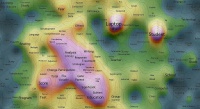
The Journal of Technology, Learning and Assessment (JTLA)
Laptops and Fourth Grade Literacy: Assisting the Jump over the Fourth-Grade Slump
- Kurt A. Suhr, David A. Hernandez, Doug Grimes, and Mark Warschauer
- School districts throughout the country are considering how to best integrate technology into instruction. There has been a movement in many districts toward one-to-one laptop instruction, in which all students are provided a laptop computer, but there is concern that these programs may not yield sufficiently improved learning outcomes to justify their substantial cost. And while there has been a great deal of research on the use of laptops in schools, there is little quantitative research systematically investigating the impact of laptop use on test outcomes, and none among students at the fourth-to-fifth grade levels. This study investigated whether a one-to-one laptop program could help improve English language arts (ELA) test scores of upper elementary students, a group that often faces a slowdown of literacy development during the transition from learning to read to reading to learn known as the fourth-grade slump. We explore these questions by comparing changes in the ELA test scores of a group of students who entered a one-to-one laptop program in the fourth grade to a similar group of students in a traditional program in the same school district. After two years’ participation in the program, laptop students outperformed non-laptop students on changes in the ELA total score and in the three subtests that correspond most closely to frequent laptop use: writing strategies, literary response and analysis, and reading comprehension.
The End of Techno-Critique: The Naked Truth about 1:1 Laptop Initiatives and Educational Change
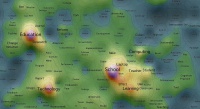
The Journal of Technology, Learning and Assessment (JTLA)
The End of Techno-Critique: The Naked Truth about 1:1 Laptop Initiatives and Educational Change
- Mark E. Weston and Alan Bain
- This article responds to a generation of techno-criticism in education. It contains a review of the key themes of that criticism. The context of previous efforts to reform education reframes that criticism. Within that context, the question is raised about what schools need to look and be like in order to take advantage of laptop computers and other technology. In doing so, the article presents a vision for self-organizing schools.
First Experiences with OLPC in European Classrooms
First Experiences with OLPC in European Classrooms describes early programs in Graz, Austria. 10/30/2009
Ethiopia Implementation Report, September - December 2007
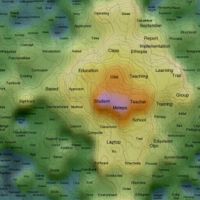
Ethiopia Implementation Report, September - December 2007,
- Bjorn Everts, Matthew Herren, David Hollow, Eduvision, February 2008
- See the Discussion about this document.
Nepal

Tackling the Problems of Quality and Disparity in Nepal's School - Education: The OLPC Model. File:SDBhatta.pdf.
- Dr. Saurav Dev Bhatta, OLE Nepal, June 2008
- ... The paper argues that utilizing the full potential of the OLPC concept requires simultaneous work in four areas: digital content development, teacher preparation, network and power infrastructure development, and government capacity development. And it also emphasizes the need for a systematic approach to implementation where the implementers start by learning to solve implementation challenges in a test phase...
Evaluation of the Teaching Matters One Laptop Per Child (XO) Pilot at Kappa I V

Evaluation of the Teaching Matters One Laptop Per Child (XO) Pilot at Kappa I V. The link that previously led to this PDF has gone dead. Please fix the entry if you find the document.
- Dr. Susan Lowes, Director, Research and Evaluation; and Cyrus Luhr, Research Assistant. Institute for Learning Technologies, Teachers College/Columbia University, June 2008.
- "Although the students saw the advantages of the XO in terms of its various specific functions or pieces of software, one theme that ties all these reported activities together is the several ways that the XOs allowed students to share: whether they were using the XOs for writing, taking photos, making videos, chatting, or whether they were rotating their screens or using the software to share them virtually, they were in every case sharing their thoughts or sharing their work.
- "When asked if there were existing functions that they would like to use more frequently, [the students] listed the creative software (Etoys, TurtleArt, and TamTamEdit) that could have educational uses but are not currently integrated into the Teaching Matters curriculum."
1:1 Technologies/Computing (Ethiopia)
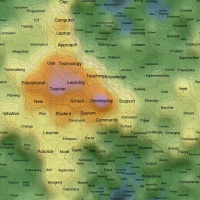
1:1 Technologies/Computing in the Developing World: Challenging the Digital Divide (.doc file), by Mary Hooker Education Specialist, Global e-Schools and Communities Initiative. Requires ACM Membership to view.
- Very conventional, and not at all helpful in coming to grips with OLPC innovation and its consequences.--Mokurai 19:06, 23 October 2008 (UTC)
The shape of disruption
A study of the influence that the XO Laptop (the One Laptop Per Child Laptop) has on a middle school learning environment http://web.me.com/geraldar/The_Shape_of_Disruption/Documents.html
Data to be collected:
1) Surveys that will examine the students’ ability to work effectively on projects; their comfort and proficiency with technology; and their autonomy as learners.
2) Interviews with teachers and students in small groups.
3) Samples of student work.
4) Information about what programs are being used on the laptops and for how long.
5) Observational recordings of classroom activities, in the form of notes as well as audio and video recordings.
6) Samples of lesson plans.
7) Assessments of student work.
Conference materials
Designing Appropriate Collaborative Learning Technologies for the Developing World
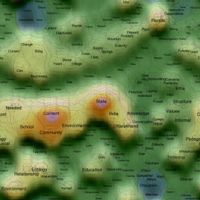
Designing Appropriate Collaborative Learning Technologies for the Developing World
- Christopher Hoadley, Sameer Honwad, Kenneth Tamminga. 205 ECC. September 26, 2007 10:00
- In this presentation we report on two attempts to intervene in rural Himalayan villages with educational technology, one involving desktop computer technology, and one involving participatory video. We describe the unique constraints of designing appropriate educational technology for the developing world, and we propose a fourfold framework for design.
A criticism of OLPC appears in the last section of this presentation.
- In this presentation we report on two attempts to intervene in rural Himalayan villages with educational technology, one involving desktop computer technology, and one involving participatory video. We describe the unique constraints of designing appropriate educational technology for the developing world, and we propose a fourfold framework for design.
Laptop Power
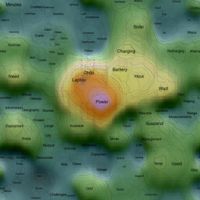
- Richard Smith, OLPC, Cambridge Country Workshop, May 20 2008
Scholarly articles
Reflections on a Pilot OLPC Experience in Uruguay
Reflections on a Pilot OLPC Experience in Uruguay,
- Juan Pablo Hourcade, Daiana Beitler, Fernando Cormenzana, and Pablo Flores, 2007, Uruguay
- ...A two-page position paper presenting opinions regarding a pilot in Uruguay. From empirical data and observations, a positive impact on the children and their school activities is claimed by this Uruguayan team...
- one of the authors has indicated current challenges are different, see Pablo Flores' May 2009 comment here
- ...A two-page position paper presenting opinions regarding a pilot in Uruguay. From empirical data and observations, a positive impact on the children and their school activities is claimed by this Uruguayan team...
Ongoing Research (not yet published)
Please add topics and links
- Pre and post test survey results from the Birmingham, Alabama USA XO laptop dissemination (Shelia Cotten, University of Alabama-Birmingham, PI of the project)
- Results of portfolio methods for children with disabilities and for ESL learners
- Bryan Berry on a counting program that brought Nepalese children up several grade levels in arithmetic
- Increases in attendance
- Laptop hospital created by six-year-olds
- Programming for children
Other Resources
Education Bibliographies
Moved to Sugar Labs wiki page
- The following selected bibliographical links have some connection with the Sugar enterprise and Constructionist education, including information on uses of a variety of technologies in education, research on child development (especially Constructivism), and evaluations of programs in use. Resources are also included bearing on other approaches to education, and resistance to Constructionism or to any other education reforms.